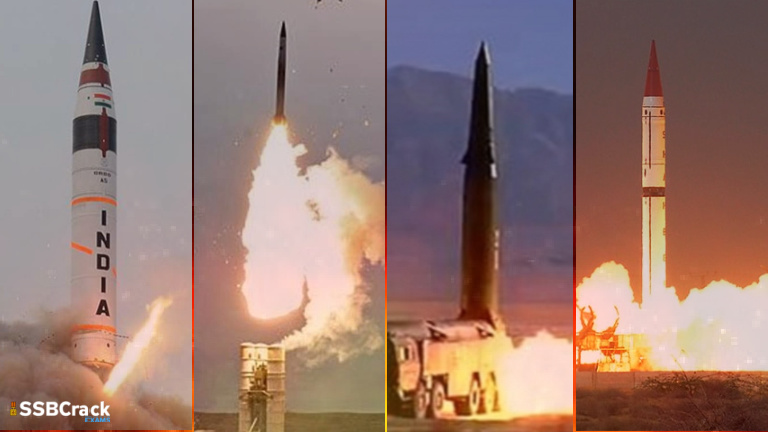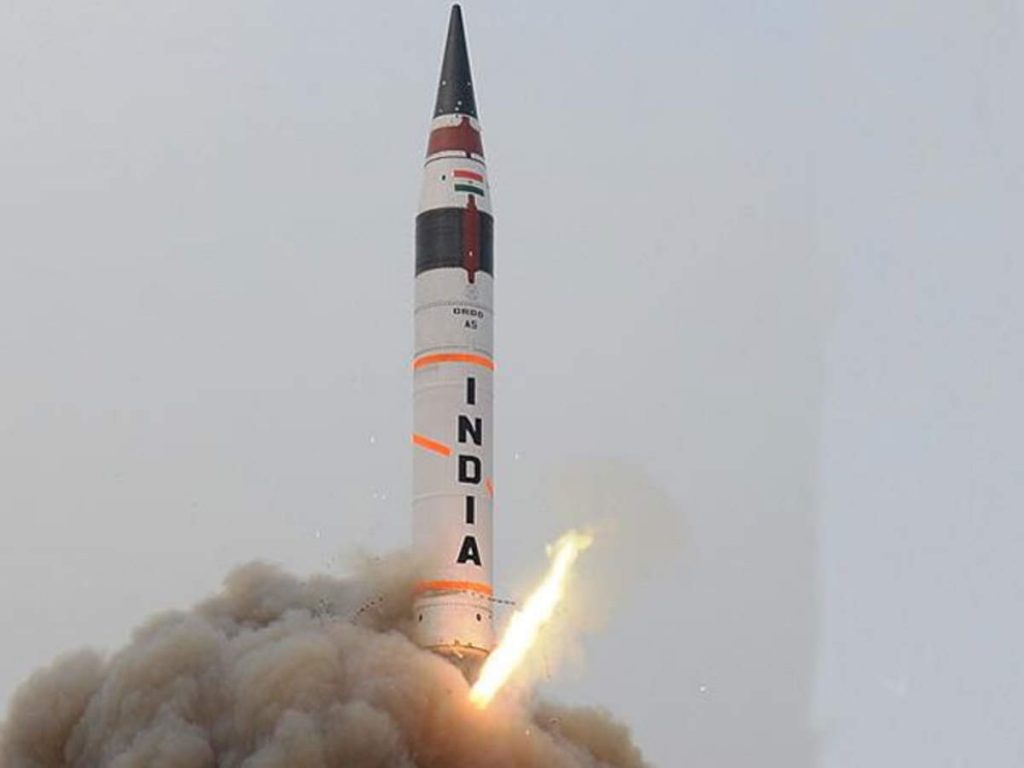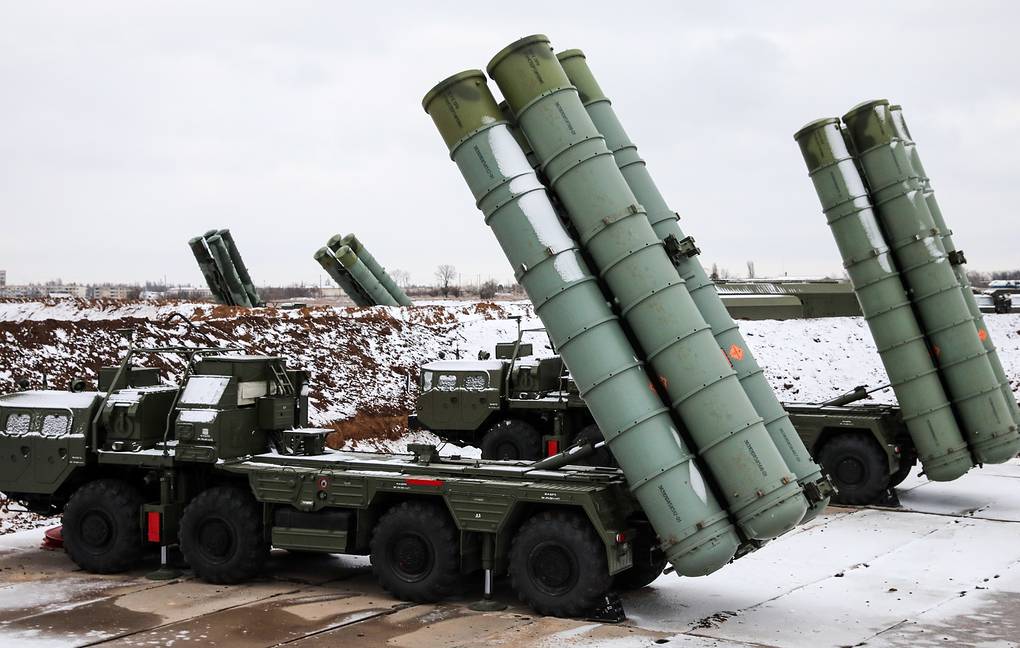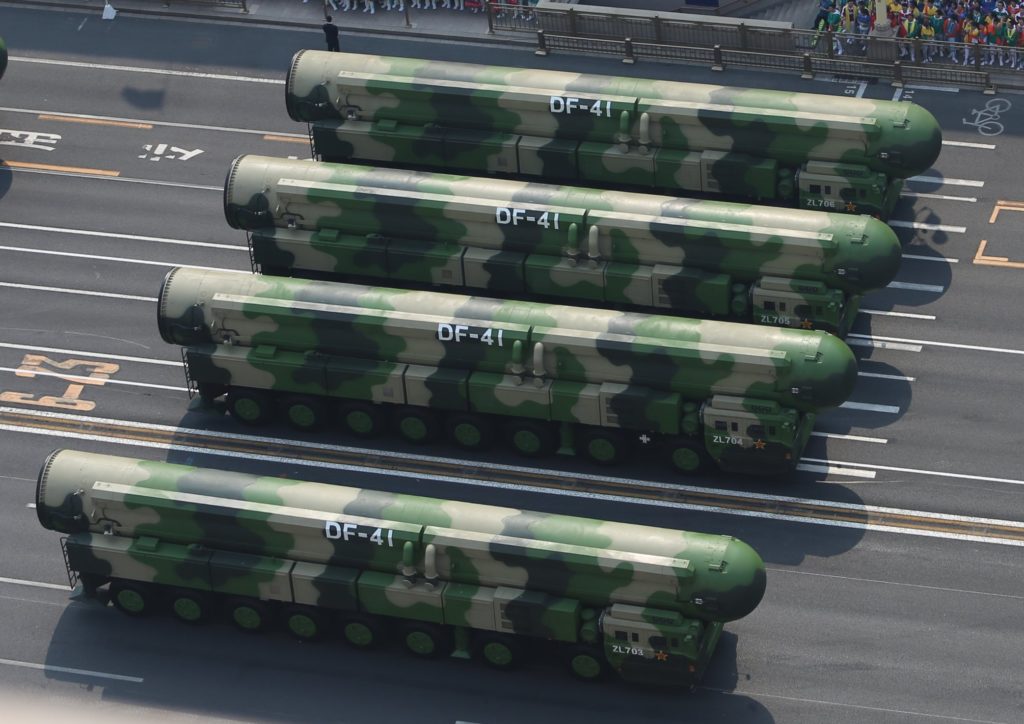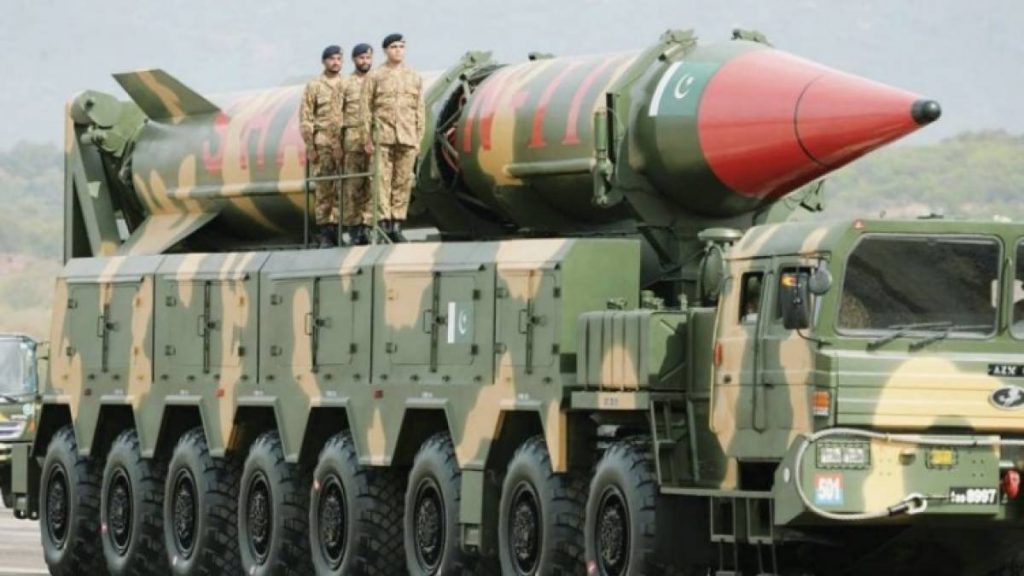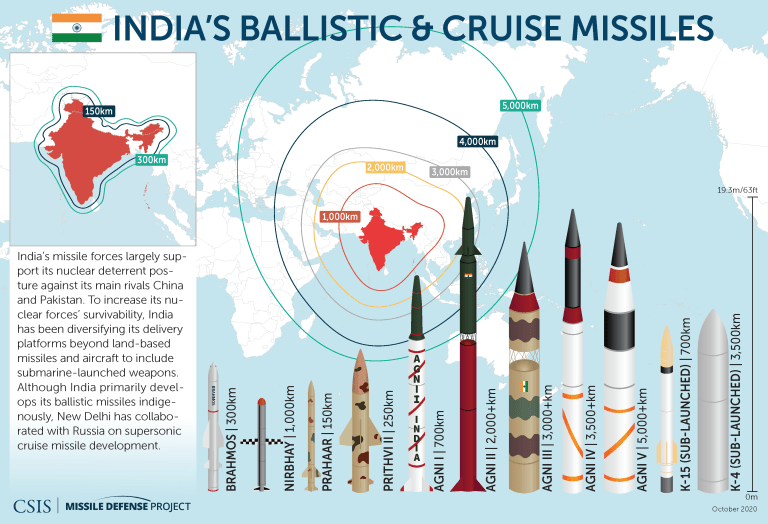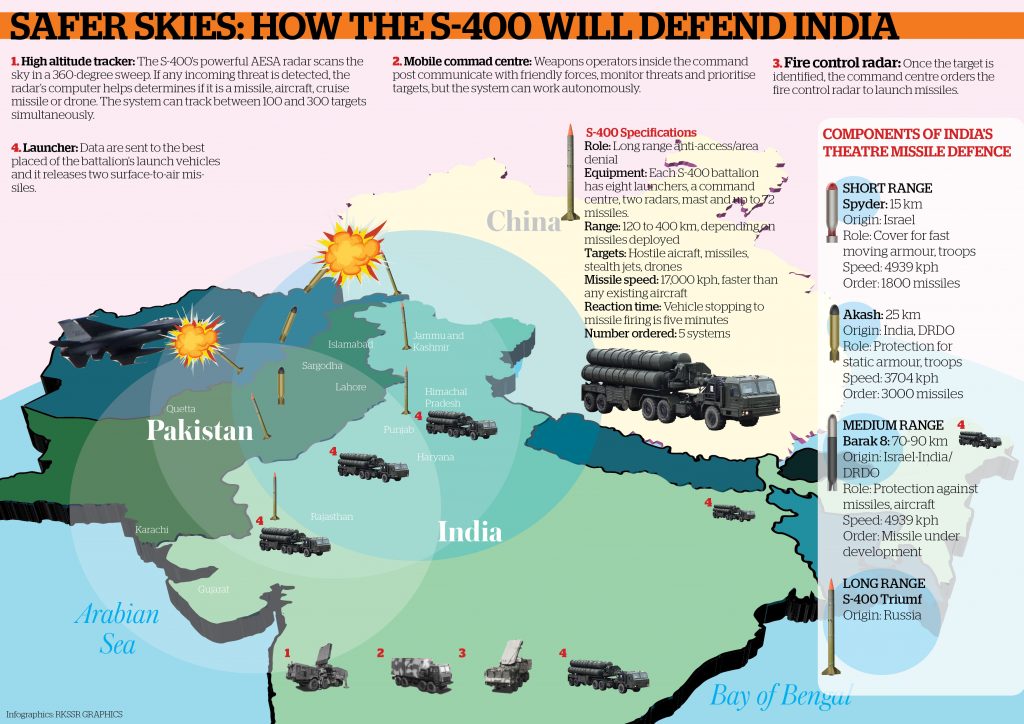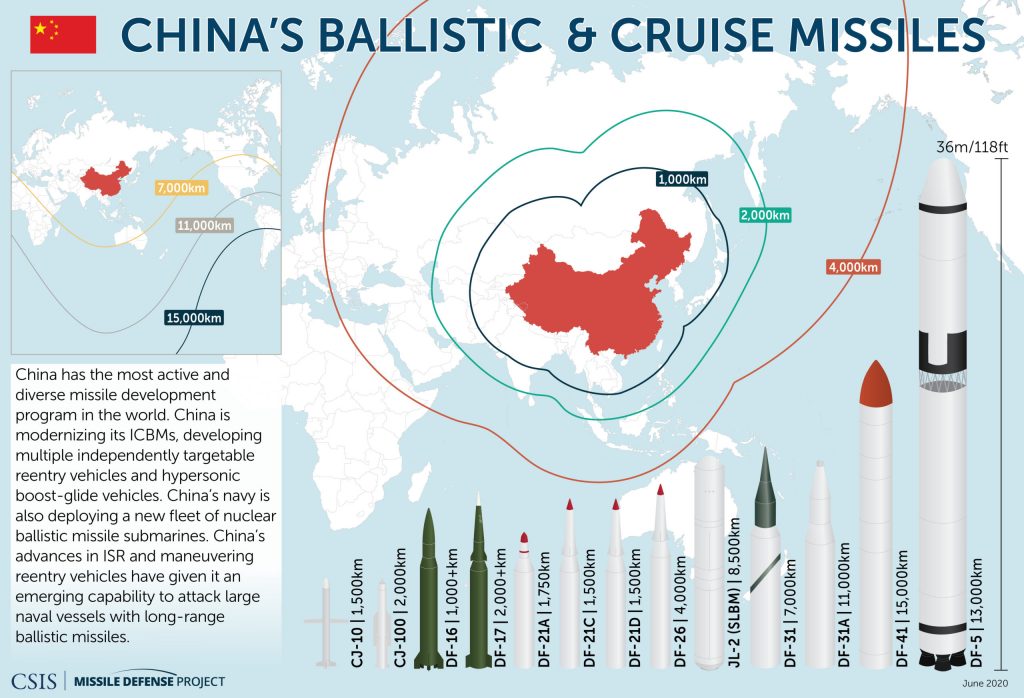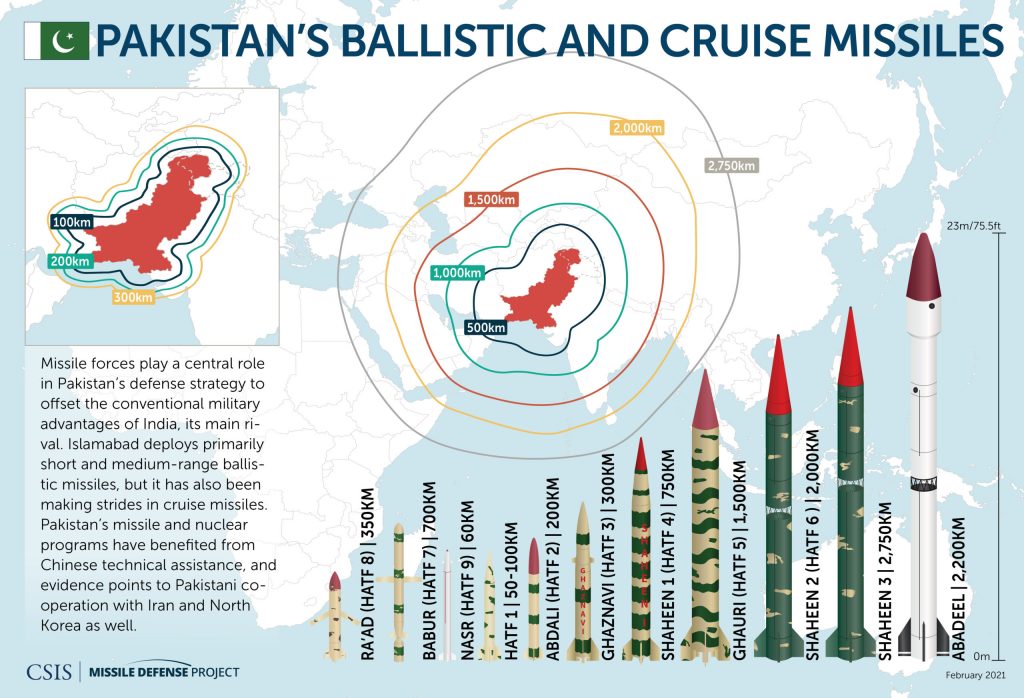A missile is a self-propelled guided airborne ranging weapon propelled by a jet engine or rocket motor. As a result, missiles are sometimes known as guided missiles or guided rockets (when in rocket form). A missile is based on five system components which are targeting, guidance system, engine, warhead and flight system.
Missiles are categorized by their adaption for different purposes:
- Surface-to-surface and
- Air-to-surface missiles (ballistic, anti-ship, cruise, anti-tank, etc.)
- Surface-to-air missiles (and anti-ballistic),
- Air-to-air missiles
- Anti-satellite weapons
India, China, and Pakistan are neighbours in South East Asia. China has been a major irritant in the region because of its habit of undiplomatic interference in the sovereignty of other states, especially India, through breaking the norms for territorial peace and doing extreme contradictions of all peace accords signed in the past.
And Pakistan has been no different. It has also tried to undermine India’s security in various ways. The three countries have always tried to expand their defence capabilities. And missiles ad missiles system has been one o the important components of the defence system.
Here we will compare and analyse the difference between India’s Agni V and India’s S-400, China’s DF-41 and Pakistan’s Shaheen-III.
Read the article till the conclusion to get the complete information about the above-said missiles.
Introduction to the Missiles
India’s Agni-V
Agni-V is an Indian nuclear-capable intercontinental ballistic missile (ICBM) developed by the Defence Research and Development Organization. Bharat Dynamics Limited (BDL)is the manufacturer of the Agni V missile system.
It is incorporated advanced technologies involving a ring laser gyroscope and accelerometer for navigation and guidance.
China has been a major irritant in obtaining peace in India. With its false claim on India’s land, china tries to create havoc and tension near the border. The Agni V missile is developed to enhance India’s nuclear deterrence against China. The solid-fuelled Agni-V is an extremely versatile missile that is apt enough to deter any kind of threat perception from China.
Agni-V has advanced technologies such as a ring laser gyroscope and accelerometer for navigation and guidance.
The development cost of the Agni V missile is over ₹2,500 crore. “The Agni-5 is specially tailored for road-mobility,” and provide a successful example of land-based strategic missiles.
India’s S-400
The S-400 Triumf is a mobile, surface-to-air missile (SAM) system developed in the 1990s by Russia’s Almaz Central Design Bureau for Marine Engineering as an upgrade to the S-300 family. It was previously known as the S-300 PMU-3.
The Economist in 2017, described the S 400 as “potent” and “one of the best air-defence systems currently made. As for the history part, the development of the S-400 started in the late 1980s. A standard S-400 battalion has at least eight launchers, and 32 missiles, as well as a mobile command centre. To fill its performance envelope, the S-400 can use up to five different types of missiles. It has 9M96E missiles for ranges up to 40 kilometres, 9M96E2 missiles for ranges up to 120 kilometres, 48N6E2 missiles for ranges up to 200 kilometres, 48N6E3 missiles for ranges up to 250 kilometres, and 40N6 missiles for ranges up to 400 kilometres.
It is also serving the countries like Russia, Belarus, China and Turkey. The deployment of s-400 has even started in India. It is believed that S-400 will fill up every gap in the Indian defence system.
China’s DF-41
The Dongfeng-41 (DF-41, CSS-20) is a fourth-generation Chinese solid-fuelled road-mobile intercontinental ballistic missile operated by the People’s Liberation Army Rocket Force.
The China Academy of Launch Vehicle Technology (CALT) is a significant state-owned civilian and military space launch vehicle manufacturer in China, which is also credited for manufacturing the DF -41 missile system. DF-41 is the fourth and the latest generation of the Dongfeng series strategic missiles, which is developed by China.
China’s DF-41 was a result of China’s degrading nuclear capacity against the US. DF-41 can carry 6 to 10 warheads, but defence analysts say that it will only carry 3 warheads.
It has a very versatile launching capacity and can be launched from Silo, road-mobile Transporter erector launcher, rail-mobile.
Pakistan’s Shaheen-III
The Shaheen-III is a Pakistani land-based surface-to-surface medium-range ballistic missile that was first fired by military personnel on March 9, 2015. The National Engineering & Scientific Commission produced it (NESCOM).
The development of India’s Agni-III gave rise to the development of Shaheen -III. According to a Pakistan defence official, the Shaheen has been developed to hurt the prevailing peace of Indian islands.
Pakistan’s Shaheen-III was shrouded in secret, and only a little amount of material was made public, largely in 2002 IDEAS. Initially, The Shaheen-III was purposed as the space booster for the space program to make it possible for installing the satellite payload applications. Later, it was taken into military service by Pakistan.
Range of the Missiles
The missiles are further categorized into small range, medium-range and long-range missiles. Let’s look at the range capacity of the missiles owned by India, Pakistan and China.
India’s Agni V
It is believed that the missile has a range of 5,500 to 8,000 km. It’s a three-stage, road-mobile, a solid-fueled intercontinental ballistic missile that’s transported by truck and fired from a canister.
India’s S-400
The S-400 missile defence system is armed with four missiles that can engage hostile aircraft, ballistic missiles, and AWACS planes at distances of 400, 250, 120, and 40 kilometres.
The S-400 started to serve on April 28, 2007. The first battalion of the newest surface-to-air missile systems, S-400, carried combat duty on August 6.
China’s DF-41
The missile reportedly has an operational range between 12,000 to 15,000 kilometres (7,500 to 9,300 mi). The missile was officially unveiled at the China National Day military parade on 1 October 2019. It can strike the US in 30 minutes from its launch.
Pakistan’s Shaheen-III
Shaheen-III is a Pakistani land-based surface-to-surface medium-range ballistic missile, which was test-fired for the first time by military service on 9 March 2015. It was manufactured by The National Engineering & Scientific Commission (NESCOM) which is a Pakistani missile manufacturer and civilian research organization of Pakistan. It has a range of 2750 km.
Maximum Speed, Length and Mass of the Missiles
India’s Agni V
The maximum speed of Agni V missiles of the Terminal phase of Mach 24 is 29,401 km/h; 18,269 mph; 8.1670 km/s. It is 24 times faster than the speed of sound. It has a length of 17.5 m and a mass of 50000 -55000, kg. Furthermore, it has a warhead that holds a Strategic nuclear weapon that weighs up to 1500 kilograms.
India’s S-400
A missile launched by the S-400 system has a top speed of almost 17,000 kilometres per hour, which is 22 times faster than a typical passenger airliner. It has a maximum height of 27,000 metres at which it can attack targets. It consists of five different missiles with different specifications, lengths and masses but overall the warhead of the S- 400 missile system is based on the ‘hit to kill technology’ which can hold 143 kg high-explosive fragmentation (48N6) normally and hit-to-kill (77N6).
China’s DF-41
This is believed to have a speed of Mach 25 which is almost 30,870 km/h. This three-stage Solid-fuel rocket can strike the US in 30 minutes. The length of this intercontinental ballistic missile is 21 metres, and it has a mass of 80,000 kilograms. Its warhead can consist of The thermonuclear weapon and 10-12 MIRVs (single 1 Megaton or MIRV with selectable 20, 90, 150 kilotons. It is a service from 2017.
Pakistan’s Shaheen-III
As for Pakistan’s Shaheen-III, there is not much information available about its speed, but it has a range of 2570 km. the length of Shaheen-III is 19.3 m. it is a Multi-stage Solid-fuel rocket with a diameter of 1.4 m. Not much information is available of its warheads and mass.
Conclusion
Missiles are an important part of the defence system. They are weapons through the state to deter the threats posed by another state. The missiles are capable enough to cause irreversible harm to the region in which they drop. The basic motive behind acquiring the various missiles is to stop the opposite state to undermine national security and sovereignty. Here, in the article above, we have tried to give the analytical point of view of the missiles and missiles systems. We have covered Agni V, S-400, china’s DF-41 and Pakistan Shaheen-III. These missiles’ system has different range, length, mass and warheads. The missiles enhance the defence capability of the nations and that’s why acquiring good missiles is vital for having a good defence system of the nation.
For more such articles, follow SSBCrackExams and stay updated.
Also Read:
